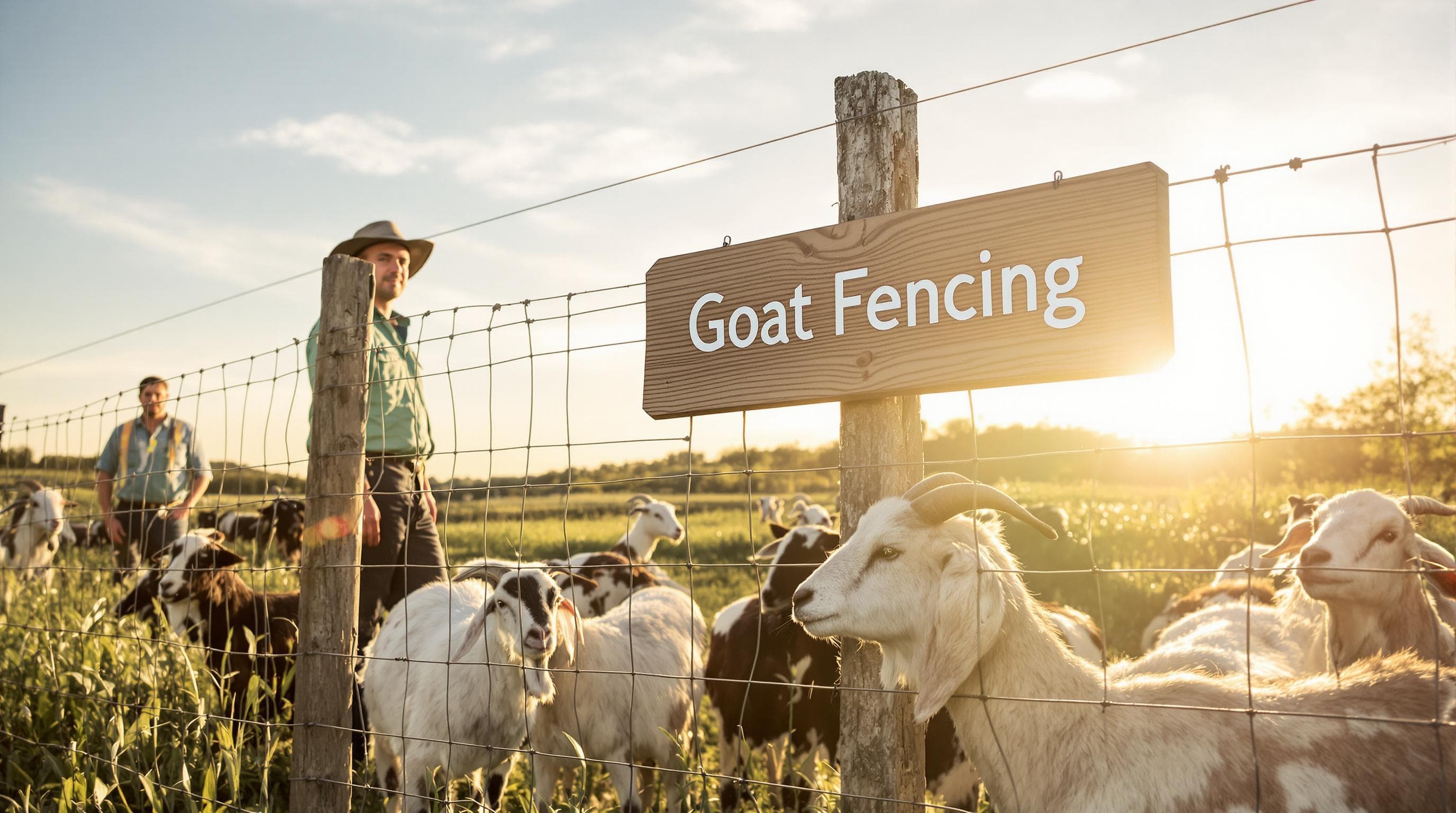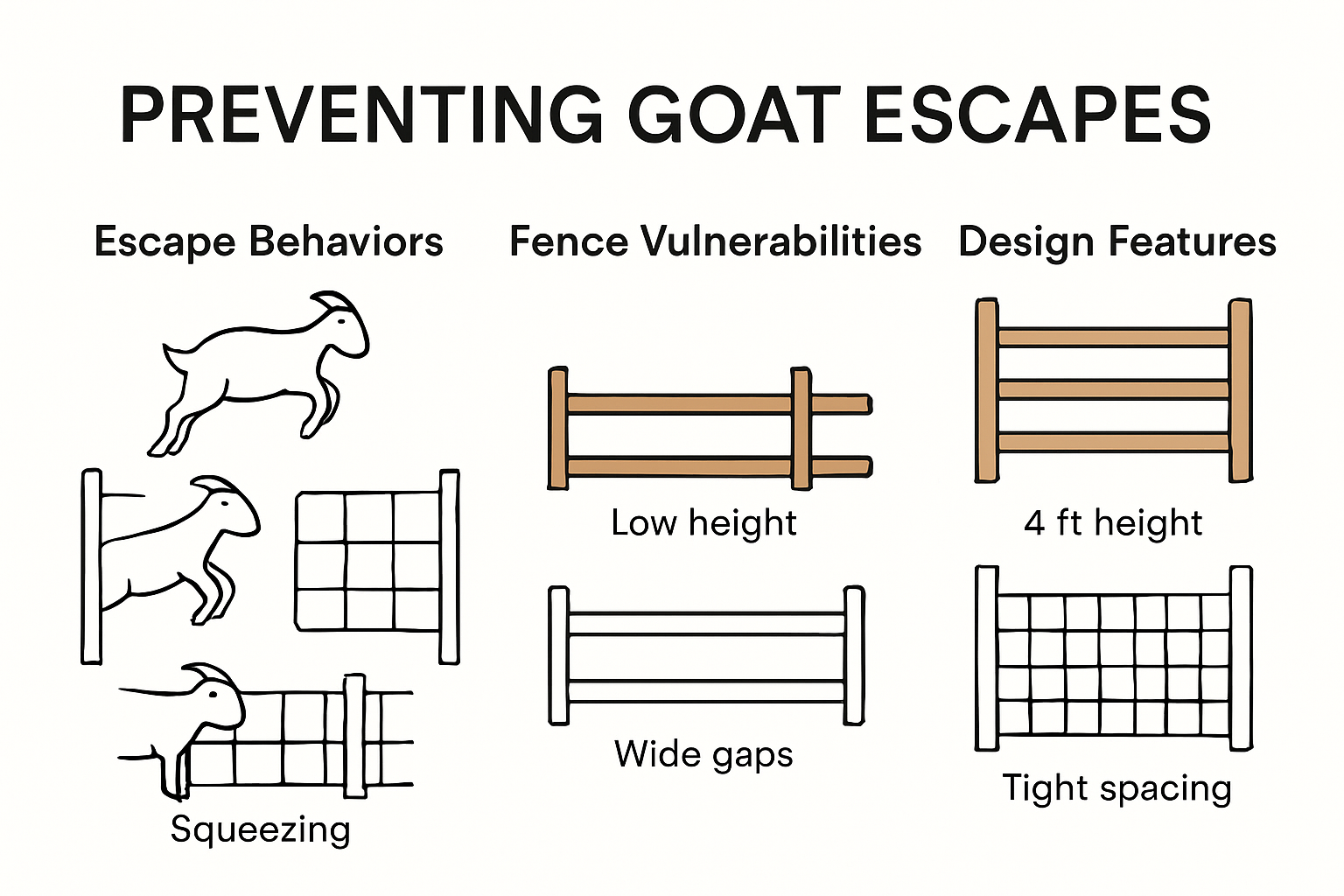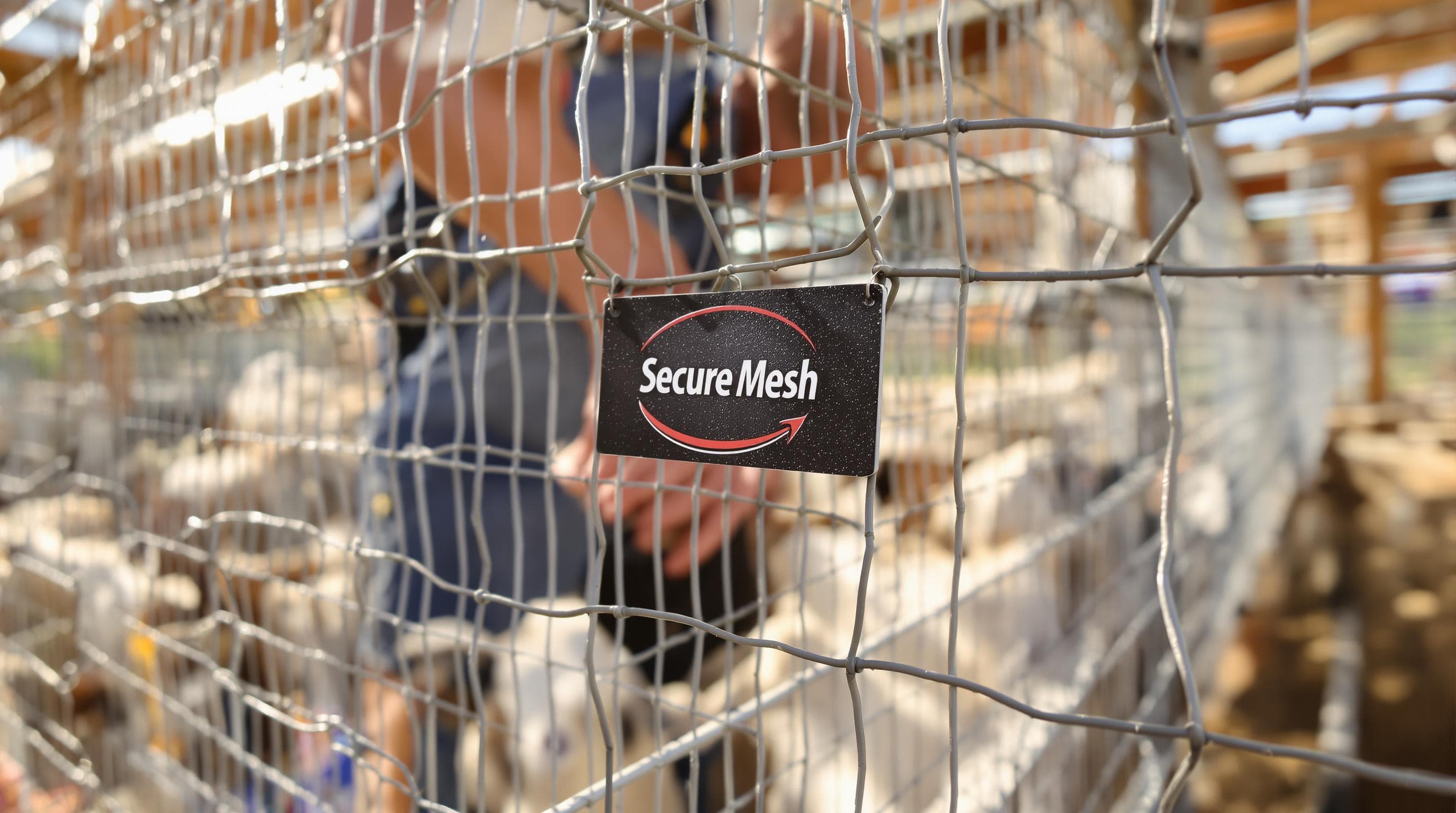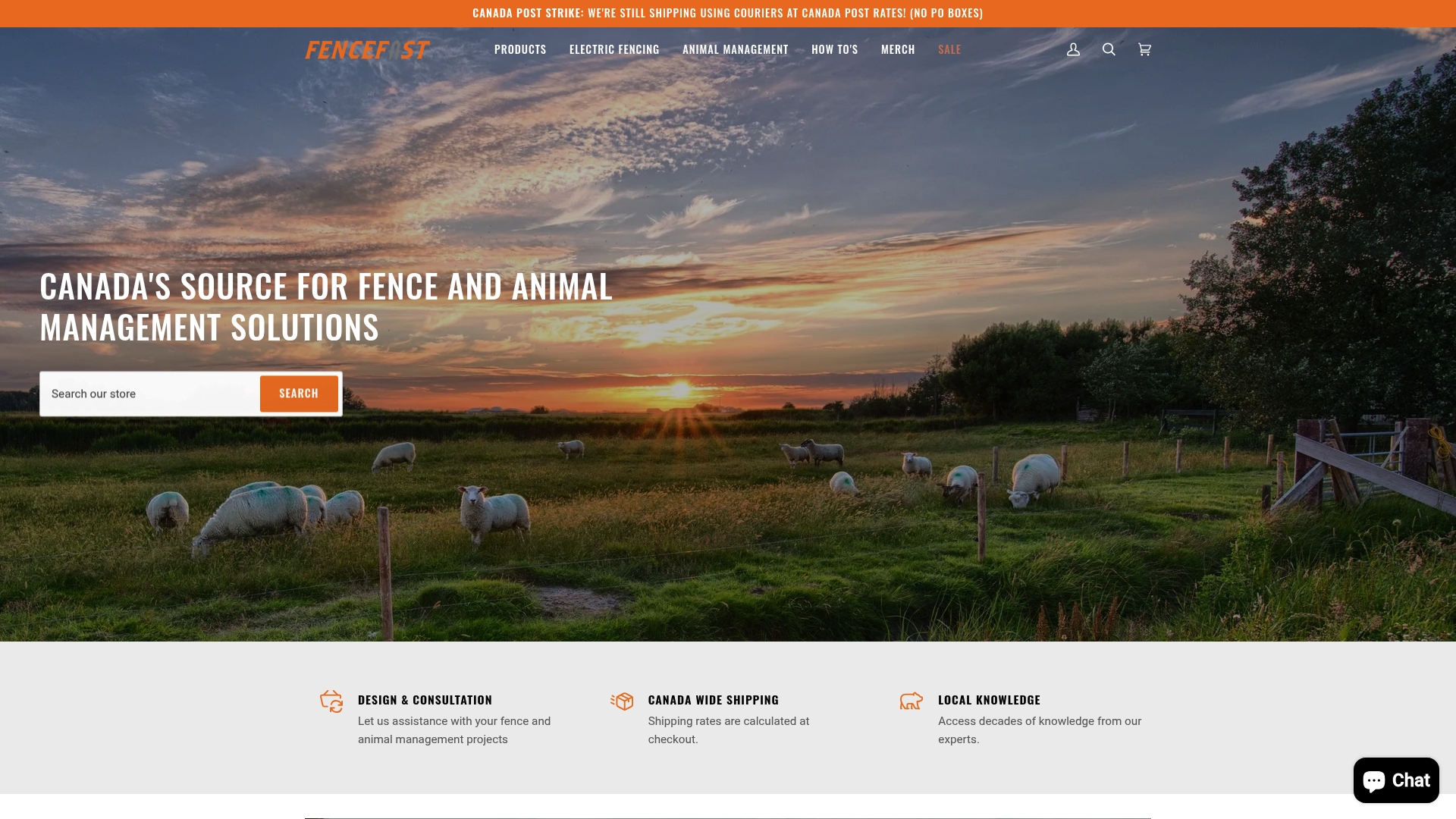
Goats are famous for escaping from nearly any enclosure. Nearly 50 percent of goat owners say their animals have managed at least one daring breakout every year. Most fences that hold cattle or sheep just do not cut it for these clever climbers. Surprisingly, spending more on heavy-duty materials is only part of the answer. The real gamechanger is understanding a goat’s wild instincts and outsmarting them before they turn your pasture into their personal playground.
Table of Contents
- Key Challenges Of Fencing Goats
- Types Of Fencing Best For Goats
- Installation Tips And Maintenance Advice
- Choosing The Right Fence For Your Property
Quick Summary
| Takeaway | Explanation |
|---|---|
| Goat Behavior Requires Specialized Fencing | Goats are agile climbers and can escape from fences that contain other livestock. Fencing designs must accommodate their vertical and horizontal movements to prevent escapes. |
| Choose Durable Materials | Woven wire fencing with small openings is highly recommended, as it provides security against escapes and protection from predators. Consider high tensile wire for its strength and flexibility. |
| Electric Fencing Must Be Properly Implemented | Electric fencing can deter goats effectively if designed with multiple hot wires at different heights, as goats may need more robust systems to ensure they feel the current. |
| Regular Maintenance is Critical | Ongoing inspections, at least quarterly, are essential to identify and repair weak points or damage in the fencing to maintain security and prevent escapes. |
| Comprehensive Planning is Essential | A thorough site assessment of the property landscape and goat herd characteristics is crucial for effective fence design and installation, ensuring long-lasting effectiveness against challenges. |
Key Challenges of Fencing Goats
Goat fencing presents unique obstacles that can challenge even experienced farmers and livestock managers. Unlike other livestock, goats are notorious escape artists with remarkable intelligence and physical capabilities that make containment a complex task.
Goat Climbing and Escape Behaviors
Goats are natural climbers with an extraordinary ability to navigate challenging terrain. Their agile bodies and strong hooves allow them to scale fences that would easily contain other livestock. Agricultural Research Service research indicates that standard fencing designs used for cattle or sheep often prove inadequate for goat management. These animals can jump vertically up to 5 feet and squeeze through incredibly narrow spaces, making traditional fence designs essentially ineffective.
The climbing behavior stems from their evolutionary adaptation as mountain dwelling animals. Goats instinctively seek high ground for safety and exploration, which translates into persistent attempts to breach perimeter barriers. Farmers must design fencing that not only prevents horizontal movement but also accounts for vertical scaling potential.

Material and Structural Challenges
Choosing the right fencing material becomes critical when managing goats. Standard wire fencing can pose significant risks. Penn State Extension recommends using woven wire with small mesh openings to prevent injury and escape. Smooth wire or widely spaced horizontal lines create dangerous opportunities for goats to become entangled or slip through.
Electric fencing offers another potential solution but requires careful implementation. Goats have thick fur that can sometimes insulate them from electrical current, meaning standard electric fence designs might not provide the deterrence needed. Specialized high tensile electric fencing with multiple hot wires at different heights becomes essential for effective containment.
Cost and Maintenance Considerations
Building secure goat fencing represents a significant investment. The specialized materials and complex design requirements mean farmers often spend substantially more on goat enclosures compared to other livestock barriers. High tensile wire, woven wire with tight mesh, and additional reinforcement features increase initial construction costs.
Maintenance becomes another critical factor. Goats are persistent and will continuously test fence integrity. Regular inspections are necessary to identify potential weak points, repair damage, and ensure the enclosure remains secure. This ongoing maintenance demands time, skill, and consistent financial investment from farmers.
Successful goat fencing requires a comprehensive approach that combines understanding animal behavior, selecting appropriate materials, and implementing strategic design principles. Farmers must think several steps ahead of their intelligent and determined livestock to create truly effective containment systems.
Types of Fencing Best for Goats
Selecting the right fencing for goats requires careful consideration of multiple factors that go beyond standard livestock containment strategies. The unique behaviors and physical capabilities of goats demand specialized fencing solutions that provide both security and safety.
Woven Wire Fencing
Woven wire fencing emerges as one of the most reliable options for goat management. Texas A&M Department of Animal Science recommends using woven wire with openings less than 4 inches to prevent goats from getting their heads stuck or escaping. This type of fencing offers multiple advantages for goat enclosures.
The tight mesh design prevents young kids from slipping through while also creating a robust barrier against predators. High quality woven wire fencing typically features strong horizontal and vertical wire connections that can withstand the persistent testing by curious and active goats. Galvanized steel options provide additional durability and resistance to rust and environmental degradation.

Electric Fencing Systems
Electric fencing represents another critical strategy for goat containment. University of Massachusetts Amherst advises that effective electric fencing should incorporate multiple wire layers to create both physical and psychological barriers. Typically, a five wire system positioned at strategic heights provides comprehensive coverage.
The psychological deterrent of electric fencing cannot be understated. Goats quickly learn to respect boundaries when confronted with mild electrical pulses. Modern electric fencing systems allow farmers to adjust voltage levels and pulse frequencies, ensuring humane yet effective containment. Solar powered options further enhance flexibility for remote or off grid locations.
High Tensile Wire Fencing
Farmers Weekly highlights the importance of sturdy fence posts and robust wire tension in goat management. High tensile wire fencing offers a lightweight yet strong solution that can be combined with electric components for enhanced security.
The key advantage of high tensile wire is its ability to flex under pressure without breaking. This characteristic makes it particularly suitable for environments with significant temperature variations or challenging terrain. Professional installation becomes critical to ensure proper wire tension and post spacing.
Successful goat fencing requires a comprehensive approach that combines multiple strategies. Farmers must evaluate their specific environmental conditions, goat breed characteristics, and potential predation risks when designing an effective containment system. The right fencing not only keeps goats secure but also protects them from external threats while providing them a safe and comfortable living environment.
To help readers compare the main fencing types discussed, here’s a summary of their key features, advantages, and considerations:
| Fencing Type | Key Features | Main Advantages | Considerations |
|---|---|---|---|
| Woven Wire | Mesh openings <4 in; strong wire connections | Prevents escapes and injuries; protects from predators | Higher cost; labor-intensive to install |
| Electric Fencing | Multiple hot wires at various heights | Psychological deterrent; flexible setup | Must ensure good contact; regular voltage checks |
| High Tensile Wire | Strong, flexible; suitable for electric combo | Withstands pressure; adapts to terrain | Requires expert installation for tension/post spacing |
Installation Tips and Maintenance Advice
Proper installation and ongoing maintenance of goat fencing are critical to ensuring long term effectiveness and animal safety. A strategic approach to fence construction and regular upkeep can prevent costly repairs and potential livestock escapes.
Pre Installation Planning
Before breaking ground on your goat fence, comprehensive planning becomes essential. University of California Agriculture and Natural Resources recommends conducting a thorough site assessment that includes terrain evaluation, soil composition, and potential environmental challenges. Understanding the landscape helps determine appropriate fencing materials and installation techniques.
Professional surveyors suggest creating a detailed property map that identifies potential obstacles such as rocky ground, slopes, or drainage areas. This preliminary work allows farmers to anticipate installation complexities and select appropriate fence posts, anchoring methods, and additional reinforcement strategies. Proper planning can reduce installation time and minimize future maintenance requirements.
Professional Installation Techniques
Iowa State University Extension emphasizes the importance of precise post placement and tension management during goat fence installation. Recommended post spacing typically ranges between 8 to 12 feet, depending on terrain and fencing material. Deeper post installation depth provides greater stability, with agricultural experts suggesting a minimum of 2 feet for standard conditions and up to 3 feet in areas with unstable soil.
Specialized techniques like corner bracing become crucial for maintaining fence integrity. Professional installers recommend using robust diagonal bracing that transfers lateral pressure and prevents post shifting. Concrete footings can provide additional stability in challenging terrain, ensuring that fence lines remain straight and tension remains consistent.
Ongoing Maintenance Strategies
Regular fence inspection represents the most critical aspect of long term goat fence management. Farmers should conduct comprehensive evaluations at least quarterly, checking for potential weak points, wire damage, or areas where goats might exploit structural vulnerabilities. Noble Research Institute recommends creating a systematic inspection checklist that includes assessing wire tension, checking for rust or corrosion, and examining post stability.
Seasonal maintenance becomes particularly important. Winter conditions can cause ground shifting and potential fence damage, while summer heat might lead to material expansion and increased wear. Proactive repairs and annual touch ups prevent minor issues from escalating into major structural problems.
Successful goat fencing is an ongoing process that requires attention to detail, consistent monitoring, and a willingness to adapt installation techniques based on specific environmental conditions. By investing time in proper planning, professional installation, and regular maintenance, farmers can create secure and reliable enclosures that protect their valuable livestock.
Below is a process table outlining the key steps for installing and maintaining goat fencing based on recommendations from the article:
| Step | Description |
|---|---|
| Site Assessment | Evaluate terrain, soil, obstacles, and drainage areas |
| Create Property Map | Identify obstacles and determine optimal fence line routes |
| Select Materials | Choose appropriate fencing materials and posts based on site and goat needs |
| Install Posts & Bracing | Position fence posts (8-12 ft apart, 2-3 ft deep), add corner/diagonal bracing |
| Attach Fence/Wires | Install selected fence type (woven, electric, high tensile) with proper tension |
| Inspect Regularly | Check for damage, tension issues, rust, and post stability quarterly or after severe weather |
| Perform Seasonal Maintenance | Address seasonal expansion/contraction, repair any weak points, retension wires as needed |
Choosing the Right Fence for Your Property
Selecting the appropriate fence for your goat property involves a complex evaluation of multiple interconnected factors. Property characteristics, herd composition, and local environmental conditions play crucial roles in determining the most effective fencing strategy.
Assessing Property Terrain and Landscape
Utah State University Extension emphasizes that property terrain significantly influences fencing design. Slopes, rocky ground, and vegetation density require tailored approaches to ensure effective goat containment. Steep or uneven landscapes demand more robust fencing solutions with additional structural reinforcement.
Farmers must conduct a comprehensive property survey to identify potential challenges. Rocky terrain might necessitate deeper post installations or alternative anchoring techniques. Heavily wooded areas require wider cleared zones around fence lines to prevent damage from falling branches or potential fence line interference. Understanding these nuanced landscape characteristics allows for more strategic fencing investments.
Evaluating Herd Characteristics and Needs
Goat breed, age, and behavioral patterns play critical roles in fence selection. Young, energetic goats require different containment strategies compared to mature breeding stock. Some breeds demonstrate more aggressive climbing or escape behaviors, demanding more specialized fencing approaches.
Consider factors such as herd size, breeding goals, and intended pasture rotation. Smaller herds might benefit from more flexible fencing systems, while larger commercial operations require more comprehensive and durable solutions. Breed specific characteristics like horn presence, jumping ability, and overall size influence material and design choices.
Cost Effectiveness and Long Term Planning
Budget considerations extend beyond initial installation costs. Farmers must evaluate long term maintenance expenses, durability, and potential replacement requirements. High quality fencing represents an investment in livestock protection and operational efficiency.
Professional agricultural consultants recommend conducting a comprehensive cost benefit analysis that includes material expenses, installation costs, anticipated maintenance requirements, and potential livestock loss prevention. Cheaper initial solutions might prove more expensive over time due to frequent repairs or replacement.
Successful fence selection requires a holistic approach that balances immediate needs with long term agricultural goals. Farmers must carefully evaluate property characteristics, herd requirements, and financial constraints to develop a fencing strategy that provides optimal protection, security, and operational flexibility. By understanding the intricate relationship between landscape, livestock, and infrastructure, producers can create robust containment systems that support healthy and productive goat management.
Frequently Asked Questions
What is the best type of fence for goats?
Woven wire fencing is often considered the best option for goats due to its sturdy construction and small mesh openings, which prevent escapes and protect from predators. Electric fencing can also be effective when properly set up with multiple hot wires at different heights.
How high should a goat fence be?
To contain most goats, the fence should be at least 4 to 5 feet high. Goats are capable of jumping and climbing, so ensuring adequate height is crucial to prevent escapes.
How can I prevent goats from escaping?
To prevent goats from escaping, use durable materials like woven wire fencing or high tensile wire, and regularly inspect your fence for weaknesses. Installing multiple layers of electric fencing can also act as a deterrent by providing both physical and psychological barriers.
What maintenance do goat fences require?
Goat fences require regular inspections, ideally at least quarterly, to check for wear and damage. Seasonal maintenance, such as retightening wires and checking for rust, is also important to ensure long-term safety and effectiveness.
Stop Goat Escapes With Solutions Built for 2025
Are you tired of watching your clever goats slip through weak fences or constantly repairing damaged enclosures? The article highlighted how goats’ climbing instincts, sharp hooves, and escape behaviors turn standard fencing into a real headache. More than just tough materials, you need a system designed to outsmart their bold moves.

Don’t let another season of costly fence repairs and escapes wear you down. Explore FenceFast.ca for a large selection of fencing solutions made for challenging livestock such as goats. From woven wire meshes that keep kids from squeezing through to robust electric fencing systems engineered for persistent jumpers, you can find products that match the latest goat fencing strategies. Visit FenceFast.ca now to get expert advice, order trusted products online, and protect your herd from problems before they start.
Recommended
-
[
Gallagher Earth Ground Stake KIWITAH – FenceFast Ltd.
](https://fencefast.ca/products/gallagher-kiwitah-ground-stake)
-
[
Gallagher Vine-Line Wire Connector – FenceFast Ltd.
](https://fencefast.ca/products/gallagher-vine-line-wire-connector)
-
[
200 WATTS 12 VOLTS MONOCRYSTALLINE SOLAR BUNDLE KITS – FenceFast Ltd.
](https://fencefast.ca/products/200-watts-12-volts-monocrystalline-solar-bundle-kits)
-
[
Corral Euro Reel Eco – FenceFast Ltd.
